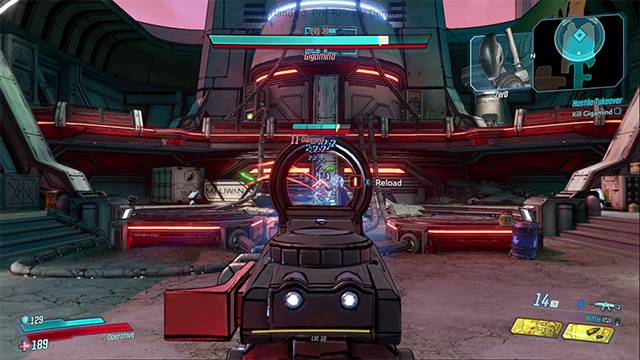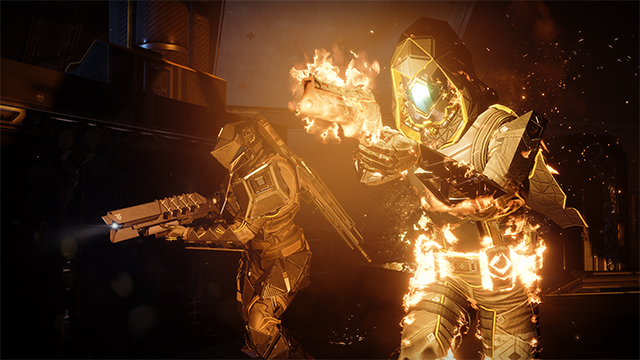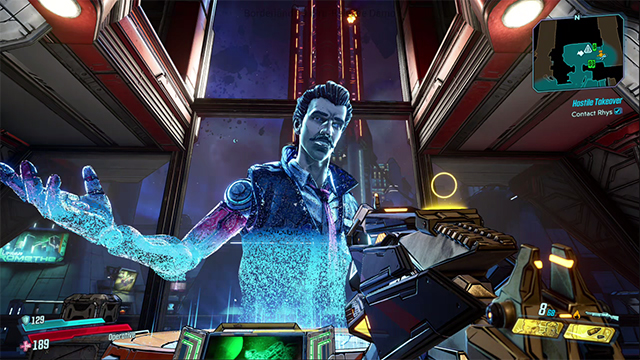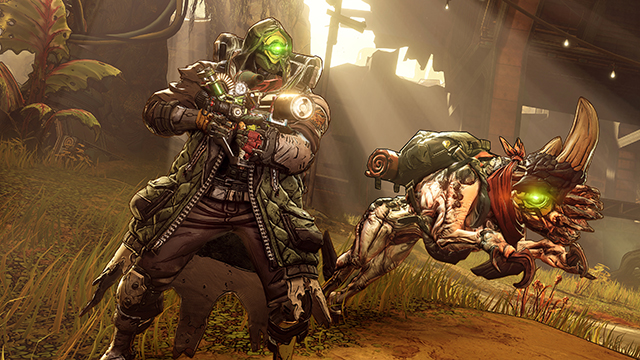Before its announcement, it was easy to assume that Borderlands 3 would be an online loot shooter like Destiny. It’s where the industry is headed and it would make sense for this third Borderlands game to follow suit. After all, it helped start this trend back in 2009 and it would be a natural progression to expand that style of game into the current craze sweeping (or infecting) the industry. But that’s not true, according to Senior Producer Anthony Nicholson. Not only was a Destiny-style game “never” what the team wanted, the team also wanted to double down on its established formula, something we noted in our recent preview.
GameRevolution: So what is the overall picture for Borderlands 3?
Anthony Nicholson: Borderlands 3 is, at its root, a game about combat and exploration and loot. So we know the formula we have in the previous Borderlands games and take that foundation and build on it and expand.
GR: That leads into my next question. Borderlands 3 still feels a lot like a Borderlands games, which will be good for some people but maybe be a bit disappointing to others. How would you respond to that?
AN: I think there’s some truth in that but I think what people need to understand is that we’ve taken those core mechanics and expanded upon them greatly. For example, you pick a character and now you have three different skills you can choose from and each of these those skills have different modifiers and augmentations. So that’s just one piece of it.
There’s a whole lot more guns now and a whole lot more permutations. We have alternate firing modes which adds to those permutations. And then now we are leaving the Pandora system and making to where we can go to other planets and explore new areas that we’ve never seen before.

GR: So it’s not as much of a revolutionary change but more like the ultimate Borderlands game?
AN: Right. Like building on what we know and adding on the depth and the breadth of what we have come to understand as the Borderlands series.
GR: Did you all take this seven years coming up with this ultimate Borderlands plan?
AN: So during the seven years, we did a couple of different things as Borderlands as a whole. We started a publishing company. We came out with Battleborn. There were a lot of different things that we tried so we’ve really just been spending the last five years trying to lock down and develop Borderlands 3. And now here we are five months away from actually releasing the game.
GR: Was announcing and releasing in such a relatively short time a conscious choice? Other games like Mortal Kombat 11 have been doing the same thing.
AN: Yes, it was. We want to make sure that, as Randy [Pitchford] says, the game does not exist until it is announced officially. So we wanted to get what we knew, get the core loop, get the core gameplay, and have that confidently before we came to public and showed Borderlands 3. We wanted to make sure that the people who come out to these events or get to see the trailers can build on those things and really enjoy it and stay on that high. Like they don’t have to wait a very long time. They can get the ride over the next few months. It kind of goes by really fast. Like a month ago, we announced the game. So now we have five more.

GR: In those five years, there have been a lot of live service game. Was there any pressure to make this a live service game like Destiny?
AN: That was never anything that we were interested in. Like I said, what we wanted to do was take the core foundation and take the core gameplay that we have and that we know works and expand on that. We know what we’re good at and we know what the community and fans love from the Borderlands series. We didn’t want to try to be different or tricky with any of that stuff. We wanted to take those things and build on those and change up the different styles of stuff like skill trees. Like we know that was fun and cool but how do we make skill trees bigger, better, and longer.
We appreciate all of the [loot shooter] games that are out there. Like we play all games. And we love the industry for all of those different things. We just really want to focus on our own lane and what we’re good at and try to do what we think is best for us.
GR: Has Borderlands 3 maybe learned from those games though?
AN: I think for sure. All forms of media lend to each other and whenever we see things, it’s not really about the games in particular that come out, but it’s more about the landscape and industry itself. The game is much bigger and has a much wider variety because we know that people want to do that. We also know that not everyone can spend all week playing a game. So what do we do? We add loot instancing so you can play for five days straight, but if I’ve only been playing for one, I can still jump in the game with you and we’ll still have a great time playing with each other and it’s not too strong for me and too weak for you.
GR: Rhys from Tales from the Borderlands is in the game. Can you talk about how Tales maybe influenced the game as a whole?
AN: Those guys [over at Telltale] did a great job. We love what they did with Tales from the Borderlands. And we love the characters that we were able to build in that too. So what you see is Rhys comes in and his motivations are a bit different this time around because he is the head of the Atlas Corporation. And he looks a little different and it’s funny that you can find out in the story what’s going on with him and what his character and personality is like now since time has passed from Tales from the Borderlands.

GR: Can you talk outside of Rhys about how Tales shows up in this game?
AN: I can’t really speak to it. Not off the top of my head. I think since Tales was a narrative-driven experience that the narrative guys pulled a lot from it but not anything that I know for sure.
GR: The environmental design gave the game a lot of variety. Can you speak more about it? Was adding more planets a conscious choice to give this game more environmental variety?
AN: I think it helps. We knew at the end of Borderlands 2 that there were multiple vaults. So what we wanted to do was stay true to that promise that we started. I worked directly with the world building teams and I oversaw the production efforts on level designs, level art, and lighting so working directly with those groups and seeing how they got to do different things from a desert, rocky landscape to a lush jungle or a city road is really awesome.







